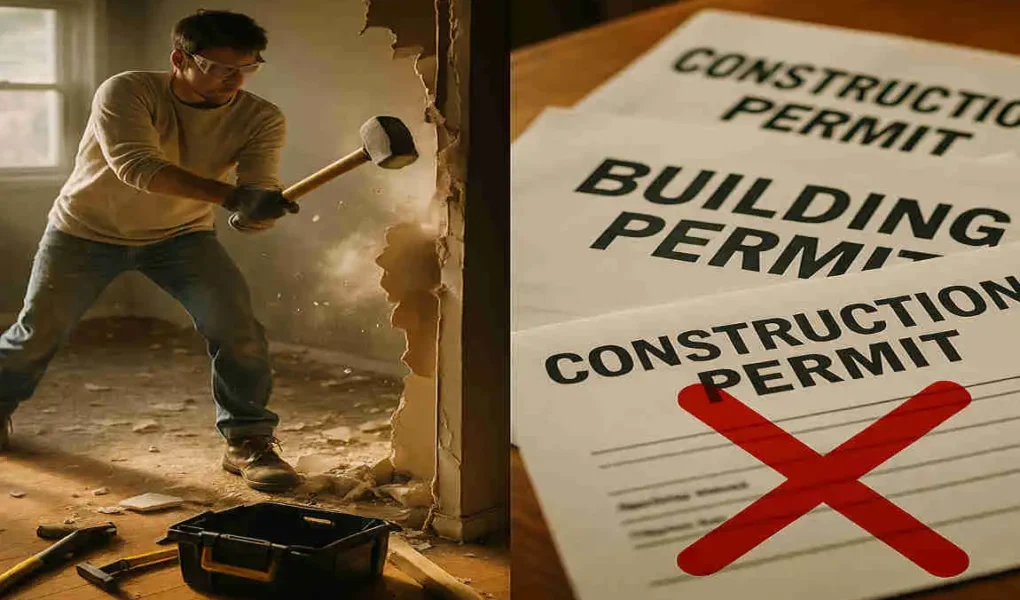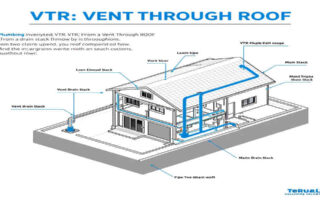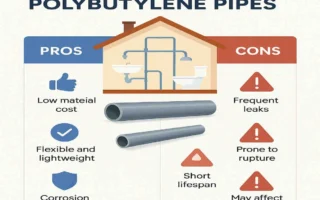Home renovation trends have seen a surge in popularity in recent years, with many homeowners looking to open up their living spaces by removing walls. While the idea of creating a more spacious and modern layout is appealing, it’s crucial to understand the importance of permits in remodelling projects. Before you start swinging a sledgehammer, you might find yourself asking, “Can I remove a wall in my house without a permit?”
What Is a Permit and Why Is It Needed?
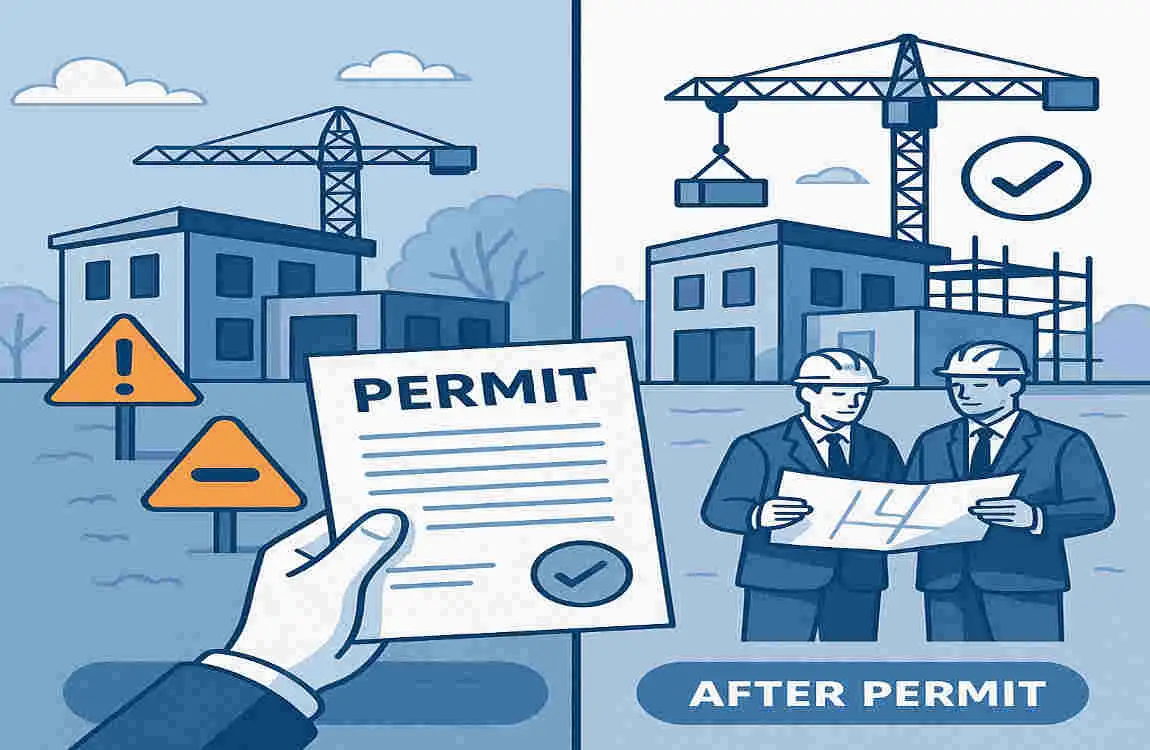
A building permit is an official document issued by your local government that grants permission to proceed with a construction or remodelling project. These permits ensure that the work being done meets specific safety standards and complies with local building codes and regulations. The purpose of permits is to protect both the homeowner and the community by minimising the risks associated with unsafe or unauthorised construction activities.
Removing a wall without a permit can have profound legal implications. Homeowners who fail to obtain the necessary licenses may face fines, penalties, and even legal action. In some cases, they may be required to undo the work or bring it up to code at their own expense. Additionally, removing a wall without proper assessment and approval can compromise the structural integrity of your home, putting your safety and the safety of others at risk.
Real-life examples demonstrate the consequences of unpermitted wall removal. In one instance, a homeowner removed a load-bearing wall without a permit, causing the second house floor to sag and requiring expensive repairs. Another homeowner faced significant fines and was ordered to rebuild the removed wall after a neighbour reported the unpermitted work to local authorities.
When Can You Remove a Wall Without a Permit?
While permits are generally required for most wall removal projects, there are some situations where you can proceed without one. The key factor is determining whether the wall is load-bearing or non-load-bearing. Load-bearing walls are essential to the structural support of your home, while non-load-bearing walls primarily serve as room dividers.
Local government regulations can vary significantly, so what may be permitted in one area may require a permit in another. Generally, minor or cosmetic changes to non-load-bearing walls, such as creating a small doorway or removing a portion of a wall to create a niche, typically do not require a permit. However, it’s always best to check with your local building department to confirm the specific requirements in your area.
Examples of projects that may be exempt from permits include:
- Removing a non-load-bearing partition wall between two bedrooms
- Creating a small opening in a non-load-bearing wall for a window or pass-through
- Removing a portion of a non-load-bearing wall to create a built-in bookshelf
Risks of Removing a Wall Without a Permit
Removing a wall without a permit comes with several significant risks. First and foremost, there’s the potential for structural damage to your home. Load-bearing walls are essential for maintaining the integrity of your house, and removing them without proper support can lead to sagging floors, cracked walls, and even collapse in extreme cases.
In addition to the physical risks, there are also legal and financial repercussions to consider. Homeowners who remove walls without permits may face hefty fines and penalties from their local government. They may also be required to undo the work and restore the wall to its original state, which can be costly and time-consuming.
Unpermitted wall removal can also affect your home’s resale value and insurance coverage. Potential buyers may be wary of purchasing a home with unauthorised modifications, and insurance companies may deny claims related to damage caused by unpermitted work.
Furthermore, if you live in a shared structure, such as a townhouse or condominium, removing a wall without a permit can put your neighbours’ properties at risk. Any damage caused by your unauthorised modifications could result in legal action against you.
To minimise these risks, it’s crucial to have a professional assess the wall before any removal work begins. A licensed contractor, architect, or structural engineer can determine whether the wall is load-bearing and advise you on the necessary steps to ensure a safe and compliant removal process.
How to Determine If You Need a Permit
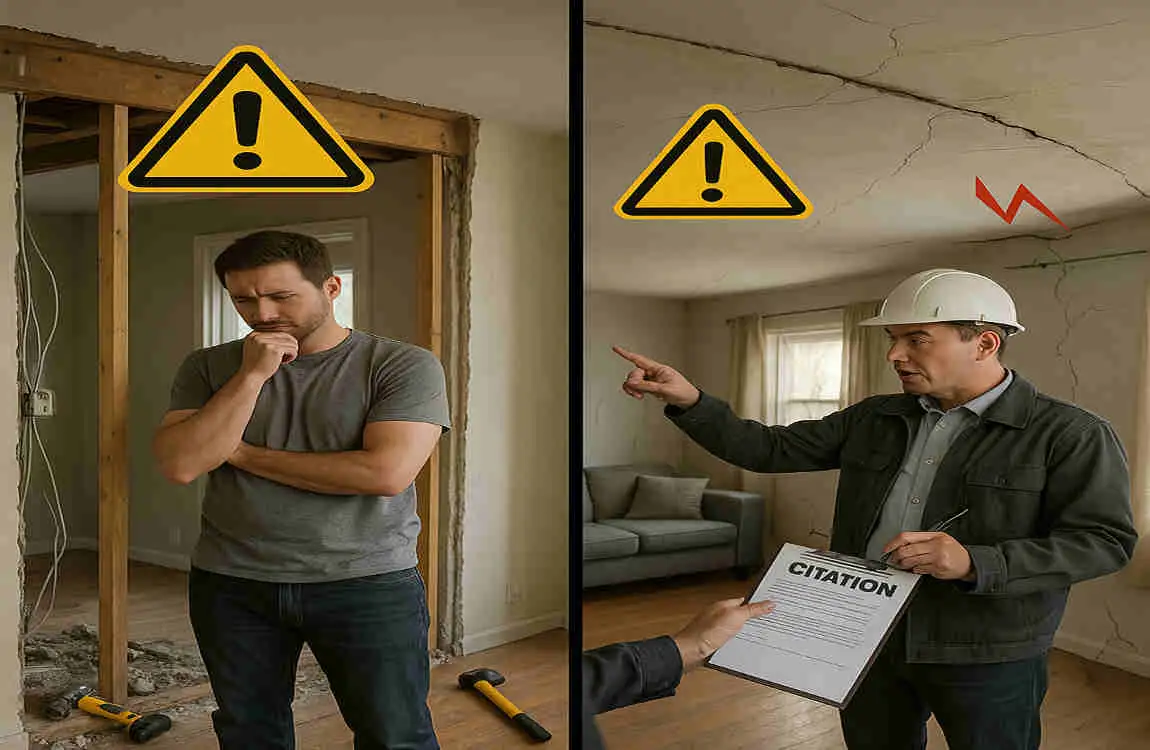
To determine whether you need a permit for your wall removal project, start by researching your local building codes and regulations. Most cities and states have websites dedicated to building permits and codes, where you can find information specific to your area. You can also contact your local building department directly to inquire about permit requirements for your project.
Consulting with professionals, such as architects, contractors, or structural engineers, can also help you determine if a permit is necessary. These experts can assess your home’s structure and provide guidance on the best course of action for your specific situation.
If you do need a permit, the process typically involves submitting an application, along with detailed plans and specifications for the project. You may also need to pay a fee and wait for the permit to be approved before beginning any work. Once the job is complete, you’ll likely need to schedule an inspection to ensure that the removal was done safely and in compliance with local codes.
Some common questions homeowners have about permits for wall removal projects include:
- How long does it take to get a permit approved?
- How much does a permit cost?
- What happens if I remove a wall without a license and get caught?
- Can I still apply for a license if I’ve already removed a wall?
Alternatives to Removing a Wall Without a Permit
If you’re unsure about obtaining a permit or want to avoid the potential risks associated with wall removal, several alternatives are available to consider. These options can help you achieve a more open and functional living space without compromising safety or legal compliance.
One option is to use temporary or decorative solutions instead of entirely removing the wall. For example, you could install a folding screen or sliding doors to create the illusion of a larger space while maintaining the wall’s structural integrity. Another idea is to use open shelving or a wider doorway to connect two rooms without completely removing the wall.
Partial removal is another alternative to consider. Rather than taking down the entire wall, you could remove a portion of it to create a pass-through or a half-wall. This approach can help you achieve a more open feel while still maintaining some separation between rooms.
If you’re unsure about the best approach for your specific situation, seeking professional help or permit house facilitation can be invaluable. A licensed contractor or architect can help you redesign your space while staying compliant with local regulations. They can also handle the permit application process on your behalf, ensuring that all necessary approvals are obtained before any work begins.
How to Safely Remove a Wall If You Have a Permit
If you’ve obtained a permit and are ready to proceed with your wall removal project, there are several key steps to ensure a safe and successful outcome. First, ensure you have all the necessary tools and equipment, including safety gear such as goggles, gloves, and a dust mask.
Before beginning any demolition work, take the time to prepare the area. Cover the floor and any nearby furniture with plastic sheeting to protect against dust and debris. Turn off the power to any electrical outlets or switches in the wall, and disconnect any plumbing or HVAC components that may be present.
Once you’ve taken these preparatory steps, you can begin the removal process. Start by creating a small hole in the wall to assess its internal structure and confirm that it’s not load-bearing. If you’re unsure, consult a professional before proceeding.
If the wall is non-load-bearing, you can begin removing the drywall and any studs or framing. Work slowly and carefully, using a reciprocating saw or demolition hammer to cut through the materials with precision. As you remove the wall, ensure that you dispose of any debris properly and maintain a clean and organised work area.
After the wall is removed, you’ll need to patch and repair any remaining gaps or damage to the surrounding walls, ceiling, and floor. This may involve installing new drywall, taping and mudding seams, and painting or refinishing the affected areas.
Finally, schedule a post-removal inspection with your local building department to ensure that the work was done safely and in compliance with your permit. This step is crucial for maintaining the legal status of your renovation and avoiding any potential fines or penalties.

